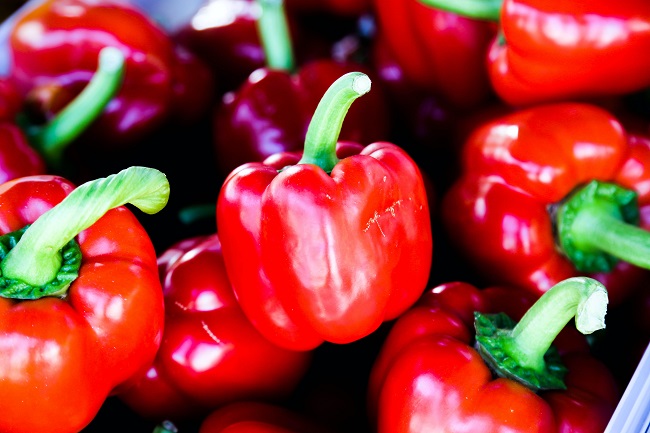
Red peppers, also known as chili peppers or capsicum, have a long and fascinating history. Here’s a brief overview:
Red peppers are native to the Americas and were first cultivated in Central and South America more than 7,000 years ago. They were used as both a food and a medicinal plant by ancient civilizations such as the Maya and Aztecs. The use of red peppers as a spice spread throughout the Americas, and by the time of the arrival of Christopher Columbus in the 15th century, they were already an important part of the diet in many cultures. Columbus brought red peppers back to Europe, where they quickly became popular as a spice and food ingredient. By the 16th century, red peppers had spread to Africa and Asia, and they are now a key ingredient in many cuisines around the world.
One of the most important varieties of red pepper is the cayenne pepper, which is named after the city of Cayenne in French Guiana. Cayenne pepper was introduced to Europe by the Portuguese in the 15th century and was soon being used to flavor a variety of dishes.
In addition to their use in cooking, red peppers have been valued for their medicinal properties. They are a rich source of vitamins A and C, as well as other nutrients and antioxidants. They have been used to treat a variety of ailments, including digestive problems, headaches, and arthritis. Today, red peppers are still an important part of many cuisines around the world, and they are used in everything from spicy sauces to pickles and salads. They are also a popular ingredient in many health supplements and natural remedies.
Growing Red Peppers
Growing red peppers is a fun and rewarding experience that can provide you with a plentiful supply of fresh peppers for cooking and snacking. Here are the basic steps to grow red peppers:
Location
Red peppers prefer a warm, sunny location that receives at least six hours of sunlight per day. They also need well-draining soil with a pH between 6.0 and 6.8. If you’re growing peppers in a container, choose one that’s at least 12 inches in diameter and has drainage holes.
Starting Pepper Seeds
Start red pepper seeds indoors about 8-10 weeks before your last expected frost date. Use a high-quality seed starting mix and plant the seeds 1/4 to 1/2 inch deep. Keep the soil moist and warm (between 70-80°F) and provide good ventilation. Once the seedlings have developed their first true leaves, you can transplant them to larger containers or outdoors.
Transplant Outdoors
Once the threat of frost has passed, transplant your red pepper seedlings outdoors. Space the plants about 18-24 inches apart in rows that are 24-36 inches apart. Gently loosen the roots of the seedling before planting and water the soil well.
Provide Support
Red pepper plants can grow quite tall and may require support to prevent them from falling over. You can use stakes or cages to provide support for the plants.
Water & Fertilizer
Water and fertilize them regularly and keep the soil consistently moist but not waterlogged. Red pepper plants benefit from regular fertilization with a balanced, slow-release fertilizer. Follow the instructions on the fertilizer package for best results. Don’t over fertilize them.
Harvest
Red peppers are ready to harvest when they reach their full size and turn red. Depending on the variety, this can take anywhere from 60-90 days from transplanting. Use a sharp pair of scissors or pruning shears to cut the peppers from the plant.
7 Fun Facts About Red Peppers
Red peppers are also known as red bell peppers, sweet peppers, or capsicums. They are the mature version of green peppers, which are harvested earlier in the growth cycle.
The heat of a red pepper is determined by the amount of capsaicin it contains. Sweet peppers, like red peppers, have very little capsaicin and are not spicy.
Red peppers are not only used in cooking, but also in traditional medicine. They are believed to have pain-relieving and anti-inflammatory properties.
Red peppers are a popular ingredient in Mediterranean cuisine, especially in countries like Greece, Italy, and Turkey.
In some cultures, red peppers are considered a symbol of good luck and prosperity. They are often used in decorations or given as gifts during the New Year or other celebratory occasions.
Red pepper flakes, which are made from dried and crushed red peppers, are a common spice used in many cuisines, especially in Italian and Mexican dishes.
Red peppers are harvested in the late summer and early fall, and can be stored in a cool, dry place for up to two weeks. They can also be frozen for later use.
Related Articles & Free Email Newsletter Sign Up
Fight Fire with Fire by Enjoying Peppers
How to Grow Great Hydroponic Peppers




Comment here